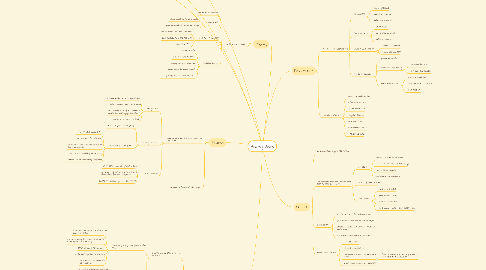
1. Do students know/see the focus question?
2. biology has many technical terms
3. where does this fit in the map?
4. Presentations
4.1. Problem - ineffective PPT
4.1.1. 40 min PPT
4.1.1.1. too long lecture
4.1.1.2. limited interaction
4.1.1.3. unfocused learners
4.1.2. too much info
4.1.2.1. dense slides
4.1.2.2. unfamiliar concepts
4.1.2.3. difficult vocab
4.1.3. what is done with PPT
4.1.3.1. notes in notebook
4.1.3.2. memorize for test
4.1.4. freshmen approach
4.1.4.1. passive recipeints
4.1.4.2. write down everything
4.1.4.2.1. copy word for word
4.1.4.2.2. can't copy and process
4.1.4.3. write down nothing
4.1.4.3.1. wait for email slides
4.1.4.3.2. don't know what to write
4.1.4.3.3. can't keep up
4.2. possible solutions
4.2.1. assertion evidence slides
4.2.2. CPAs prior to class
4.2.3. delete extraneous
4.2.4. segment lessons
4.2.5. pose questions
4.2.6. collaborative tasks
4.2.7. interactive slides
5. Lecture
5.1. no interaction beyond F2F sessions
5.2. the problem: non-tech teacher who likes to keep close control
5.2.1. non-techie
5.2.1.1. all materials must be paper
5.2.1.2. does not currently use technology
5.2.1.3. materials are dated
5.2.1.4. no interactive materials
5.2.2. no use of current data
5.2.3. close control
5.2.3.1. sage on the stage
5.2.3.2. same weekly format
5.2.3.3. initiates discussions
5.2.3.4. time bound - only in-class collaboration
5.3. advantages
5.3.1. has total say as to topics covered
5.3.2. practitioner - can use actual examples
5.3.3. decides on discussions based on teacher preference
5.3.4. can schedule assessments whenever
5.4. impact on students
5.4.1. minimal control
5.4.2. minimal responsibility
5.4.3. assignments submitted with hard copies
5.4.3.1. "lost" assignments can be problematic for teacher and students
5.4.4. visual resources are not available
6. Discussions
6.1. class dominated by lecture with minimal time for discussion
6.1.1. discussion dominated by a few students
6.1.1.1. establish participation protocol for f2f
6.1.1.1.1. 3 students must talk before 1 can comment again
6.1.1.1.2. use small group discussions to move to whole group - Snowballing
6.1.1.1.3. establish conversation roles
6.1.1.1.4. invite next speaker to comment
6.1.1.1.5. determine class rubric for participation
6.1.1.2. establish protocol for on-line discussions
6.1.1.2.1. determine writing protocols with attention to tone
6.1.1.2.2. determine response requirements
6.1.2. students unprepared to discuss
6.1.2.1. require readings/videos prior to discussion with written notes
6.1.2.2. use text-dependent responses (students must cite text - not just share opinion
6.1.2.3. use Quotes to Affirm/Challenge
6.1.2.4. use Discussion Audit
6.1.3. extend conversation beyond class time
6.1.3.1. plan for more in class discussion time perhaps 20 minutes of discussion
6.1.3.2. assign on-line discussion task through a blog, forum...
6.1.3.3. use Critical Incident Questionnaire to determine what is engaging students
7. Mapping
7.1. making a good map
7.1.1. create focus question
7.1.2. few words
7.1.2.1. which words should be included
7.1.2.2. how will academic vocab be taught?
7.1.3. limit to 3-4 concepts
7.1.3.1. how to choose the few concepts
7.1.3.2. how detailed to make the map
7.1.3.3. more is less???
7.1.4. technical issues
7.1.4.1. too much info
7.1.4.2. lines too close together
7.1.4.3. linking lines are repeating
7.1.4.4. what should be cross linked?
7.1.4.5. saving cmaps on hard drive vs. cloud
8. Timelines
8.1. main problem is using social media in high school
8.1.1. 9th graders
8.1.1.1. use social media without boundaries
8.1.1.2. little thought about legal issues
8.1.1.3. non-development of the cerebral cortex for making good decisions
8.1.1.4. regard social media as FUN
8.1.2. school guidelines
8.1.2.1. IAUP - required school policy
8.1.2.2. school social media policy
8.1.2.2.1. NYC - 14 page document
8.1.2.2.2. parents must be informed
8.1.2.2.3. social media should be restricted to school community
8.1.2.2.4. internet accessibility within school
8.1.2.2.5. student use of technology equipment
8.1.3. teacher concerns
8.1.3.1. justification for using social media
8.1.3.2. getting students to rise to a level of seriousness for the assignment
8.1.3.3. constant monitoring of social postings
